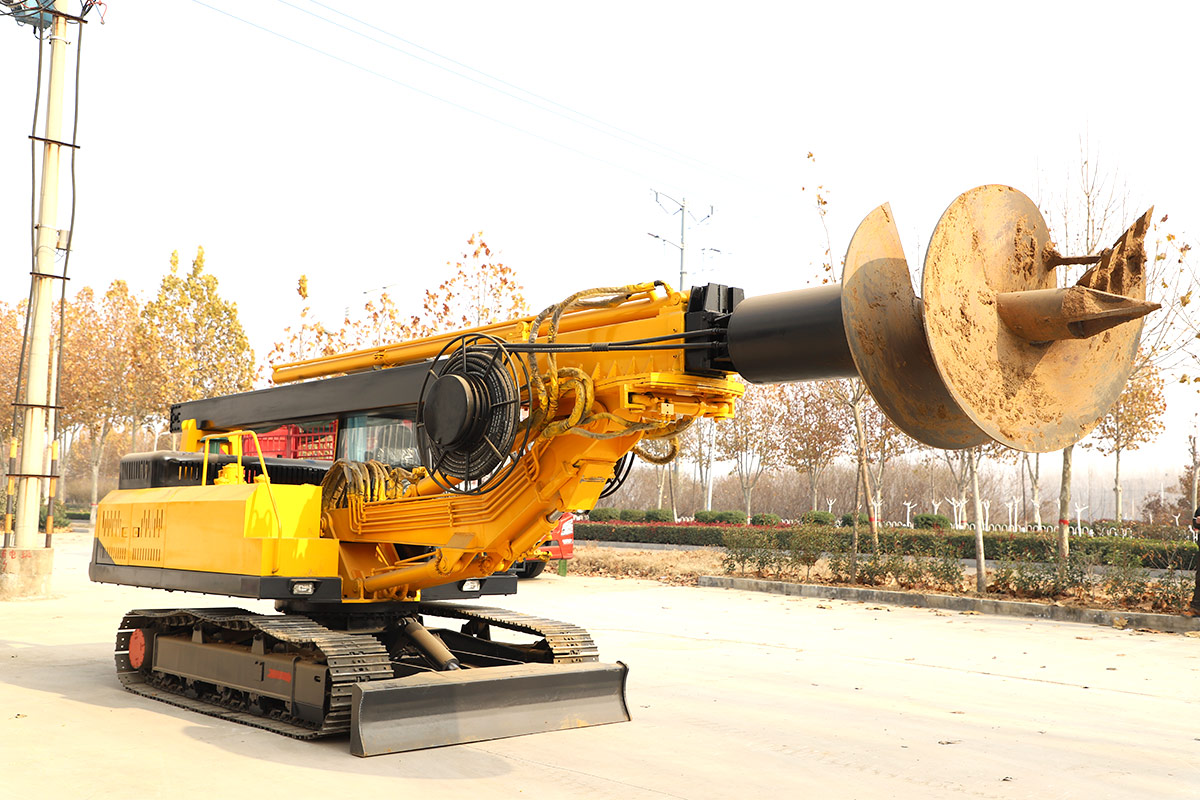
Construction technology and operation rules of rotary drilling rig
The main process steps of the rotary drilling rig construction process are as follows:
1. Casing buried. Casing burial is the beginning of rotary drilling rig construction. The accuracy of the plane position and verticality of the casing, as well as the tightness and impermeability of the casing around the casing and at the bottom of the casing have a great influence on the drilling and pile-forming quality of the rotary drilling rig. According to geological conditions, the length of buried casing can reach 6.0m. The length of the casing of this project is 4~6m, the inner diameter of the casing is 1.05m, and the outer diameter is 1.11m. When laying the casing, check the verticality with a level. The top of the casing is usually 0.3 meters higher than the original ground, so as to facilitate the location of the drill bit and protect the pile hole.
2. Mud preparation. Since the foundation rock and soil of viaducts contain layers of fine sand, silt and coarse sand, and the groundwater table is high, the performance index of the mud is particularly important. The slurry materials are selected from bentonite or clay, polyacrylamide and caustic soda. Adding an appropriate amount of caustic soda can increase the viscosity of the mud. Relevant experiments show that at this time, the argillaceous clay particles are evenly suspended, the precipitation is small, and the performance is stable, which meets the needs of drilling.
3. Drilling construction. When the drill bit is lowered to the predetermined depth, the drill bucket is rotated and pressure is applied to squeeze the soil into the drill bucket, close the bottom of the drill bucket, and lift the drill bucket to unload the soil to the stacking site. Pay attention to the groundwater level in the cave and replenish water in time to prevent landslides. During the construction of the drilling rig, ensure that the mud surface is always not lower than the bottom of the casing to ensure the stability of the hole wall.
Reasonably control the drilling and lifting speed of the drill bucket. During the drilling process of the rotary drilling rig, the drilling speed should be strictly controlled, and the lifting speed of the drilling bucket should be kept at 0.70~0.85m/s. If the drilling bucket is lifted too fast, the mud between the outer wall of the drilling bucket and the hole wall will wash the hole wall. In addition, the lower part of the drill bucket will generate a large negative pressure, causing the hole wall to shrink and collapse. When drilling in silt layer or sub-sand layer, the lifting speed should be slower. When drilling or passing through the junction of soft and hard layers, the footage should be advanced slowly to keep the drill pipe vertical. During the drilling process, the accumulated soil at the hole and the loose soil on the ground should be removed at any time.
4. Clear holes. Hole cleaning is an important link in the construction of bored piles and an important link in ensuring the quality of cast-in-situ piles. Through hole cleaning, quality requirements such as pile hole quality indicators, hole bottom sediment thickness, drilling slag amount in circulating fluid, and hole wall mud can be guaranteed. The hole cleaning method of positive circulation rotary excavation technology is: after the pile hole is completed, increase the drilling tool by 20-50m, use a large pump to pump new mud whose performance index meets the requirements, and maintain positive circulation for more than 30 minutes. If the mud overflowing the orifice is basically distorted and there is no agglomeration residue, the error between the measured hole depth and the actual drilling depth is within 30cm, and the hole cleaning is completed.
5. Manufacture and installation of reinforcement cage. When making reinforcement cages, the cut steel support frames should be placed on the same horizontal plane with a distance of 2-3m and aligned with the center line, and then the fixed length main steel bars should be placed straight on the welded support frames. Stirrups should be inserted into the main reinforcement according to the design requirements and kept perpendicular to the main reinforcement for spot welding or binding. After the stirrups and the main reinforcement are welded or bound, the winding steel bars should be wound on it according to the specified spacing, and tied with binding wires, and fixed by spot welding at regular intervals. The reinforcement cage should be hoisted at three points to keep the axes of the reinforcement cage coincident. When the reinforcement cage enters the hole, it should always be kept vertical, aligned with the hole position, and placed gently and steadily to avoid collision with the hole wall. Once blocked, find out the cause immediately, and prohibit shaking and forcible impact.